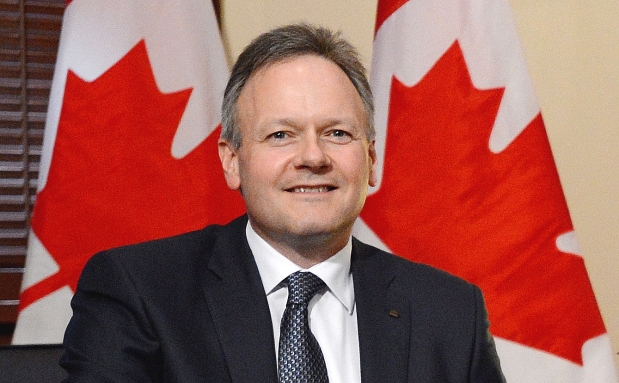Other

In its first policy announcement under new governor Stephen Poloz, the Bank of Canada dropped the reference that interest rates are likely to remain unchanged for a period of time. Photograph by: Sean Kilpatrick , THE CANADIAN PRESS.
OTTAWA — The Bank of Canada is mostly sticking to the same script under new governor Stephen Poloz, maintaining the trendsetting policy rate at the super-low level of one per cent and declaring the monetary stimulus will remain until conditions improve.
Some analysts had anticipated that the first policy announcement and quarterly economic report since Poloz took charge on June 1 would be an opportunity to set a new course from his predecessor Mark Carney, but except for some new, expansive language, there was little sign the men see the world differently.
“As long as there is significant slack in the Canadian economy, the inflation outlook remains muted, and imbalances in the household sector continue to evolve constructively, the considerable monetary policy stimulus currently in place will remain appropriate,” Poloz told a news conference Tuesday.
“Over time, as the normalization of these conditions unfolds, a gradual normalization of policy interest rates can also be expected, consistent with achieving the two per cent inflation target.”
Still, the Canadian dollar shed nearly half a cent on the release of the statement, which offered more clarity about when Canadians can expect higher interest rates.
CIBC chief economist Avery Shenfeld said he believes markets had priced in an earlier move than the central bank had intended on rate hikes, and the new language makes clearer that low borrowing costs are here to stay for a considerable time.
“They did decide to clarify under what conditions policy will begin to tighten, but other than rewording it, there wasn’t really anything dramatic,” he said.
“Perhaps the market seeing the clarification of the wording of when rates would rise did a bit of rethinking.”
Bank of Montreal chief economist Doug Porter largely concurred, saying Poloz brought “a slightly different style to the bank, but so far no real change in the substance of their view.”
The bank did adjust upwards Canada’s growth rate for this year to 1.8 per cent from its previous call of 1.5 per cent, but that was almost entirely due to a stronger than anticipated first quarter.
As well, the bank sees the just completed second quarter being set back by the Alberta floods and a mid-June Quebec construction strike to one per cent growth, but with both disruptions ending, the third quarter will make up the difference with a 3.8 per cent rebound.
The hit on second-quarter growth was estimated at 1.3 percentage points, meaning without the extraordinary shocks, the economy was expected to grow by 2.3 per cent in the April-June period.
Evening out the choppy quarters, the bank expects the economy to expand at a rate of 2.7 per cent in 2014 and 2015, little change from the April forecast of 2.8 and 2.7 growth in the two years.
“While real (gross domestic product) growth in the first quarter of 2013 was stronger than expected, the bank foresees a somewhat more challenging external environment over the projection horizon than previously anticipated,” it explained.
“This reflects slightly reduced expectations for global economic growth, which contributes to a lower profile for commodity prices.”
The Poloz-led bank did change the language on the tightening bias pointing to higher interest rates, dropping the reference to “considerable monetary policy stimulus” likely remaining appropriate “for a period of time.”
But it is a distinction without a difference.
The new forward guidance makes clearer that as long as there is considerable slack in the economy, which won’t be absorbed until mid-2015, inflation pressures remain muted and household finances continue to improve, the current interest rate setting remains appropriate, adding:
“Over time, as the normalization of these conditions unfolds, a gradual normalization of policy interest rates can also be expected, consistent with achieving the two per cent inflation target.”
That suggests Canadians should expect to enjoy super-low borrowing rates until at least the end of 2014 and possibly well into 2015.
The bank also dropped its specific reference to the “persistent strength of the Canadian dollar” as a drag for exports, instead substituting the more generic “ongoing competitive challenges.” The loonie has weakened in the past few months and is currently hovering around 96 cents US.
Still, the bank is counting exports to eventually take the Canadian economy out of the slow lane as demand in the U.S. picks up, which it believes will also boost confidence and boost business investment.
“After picking up sharply in the first quarter, exports are projected to continue to increase at a solid pace,” the bank says. “The further recovery in U.S. business and residential investment should particularly benefit those export sectors that have lagged thus far, notably machinery and equipment and lumber products.”
It expects exports to add 0.8 percentage points to gross domestic product output this year, followed by 1.4 points next and 1.3 percentage points in 2015.
As it did in April, the bank welcomes the moderation in borrowing by Canadians despite the low interest rates, noting that household credit has continued to slow to a rate below its historical average.
The bank takes some notice of the recent rebound in the housing market, although it says it expects residential investment to decline further from historically high levels to a “more sustainable path.”
On the global economy in general, the bank has downgraded growth this year by 0.2 percentage points to 2.8 per cent, with rebounds of 3.5 per cent and 3.7 per cent in 2014 and 2015, both moderately lower than it had previously projected. The change reflects slowing economic growth in China and other emerging countries, the bank said, and continued weakness in Europe.
